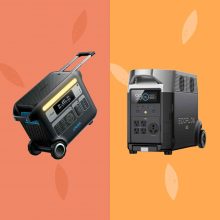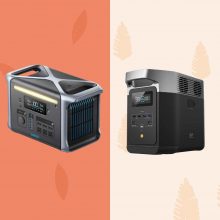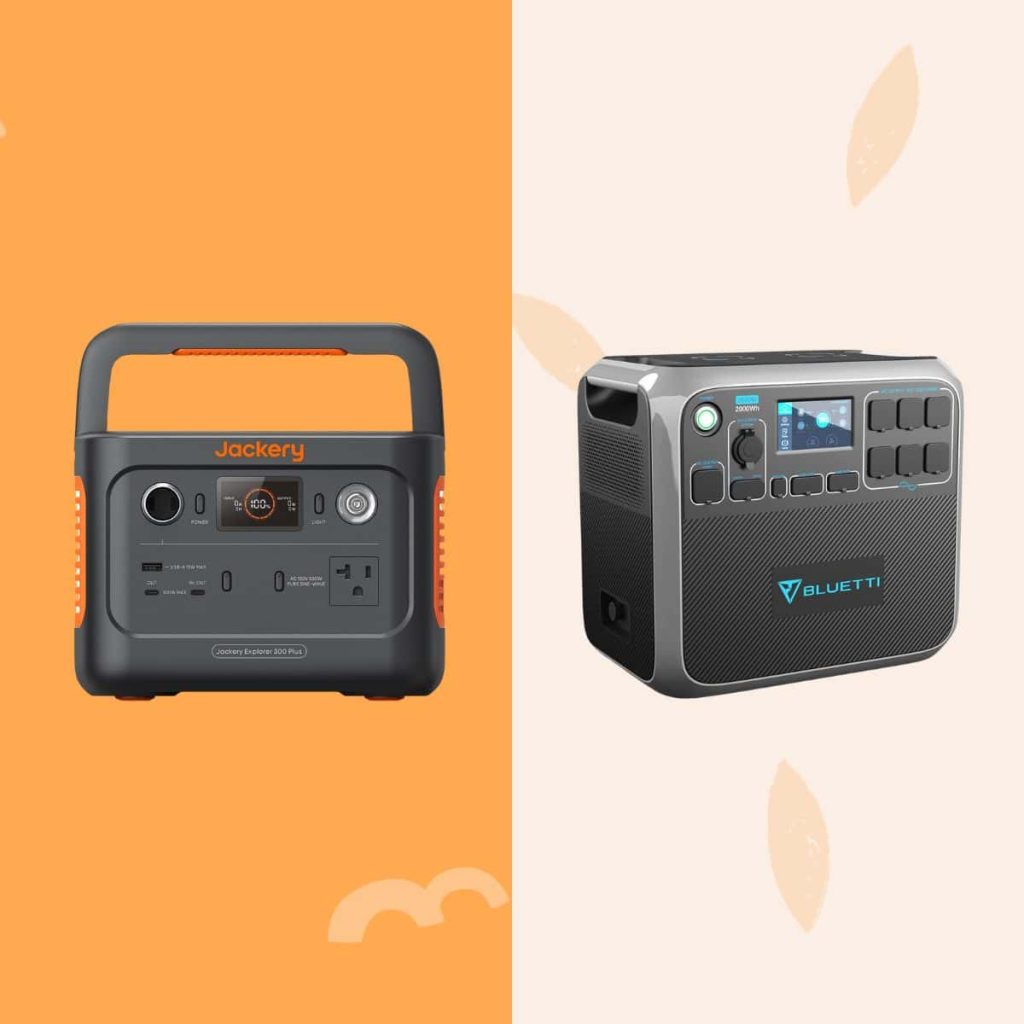
BLUETTI and Jackery are two leading makers of portable power stations and solar generators. In this article, we’ll compare several popular models from each brand to see how they match up.
We’ll look at features like capacity, output, battery type, charging time, outlets & ports, warranty and price to determine which brand reigns superior.
About Bluetti
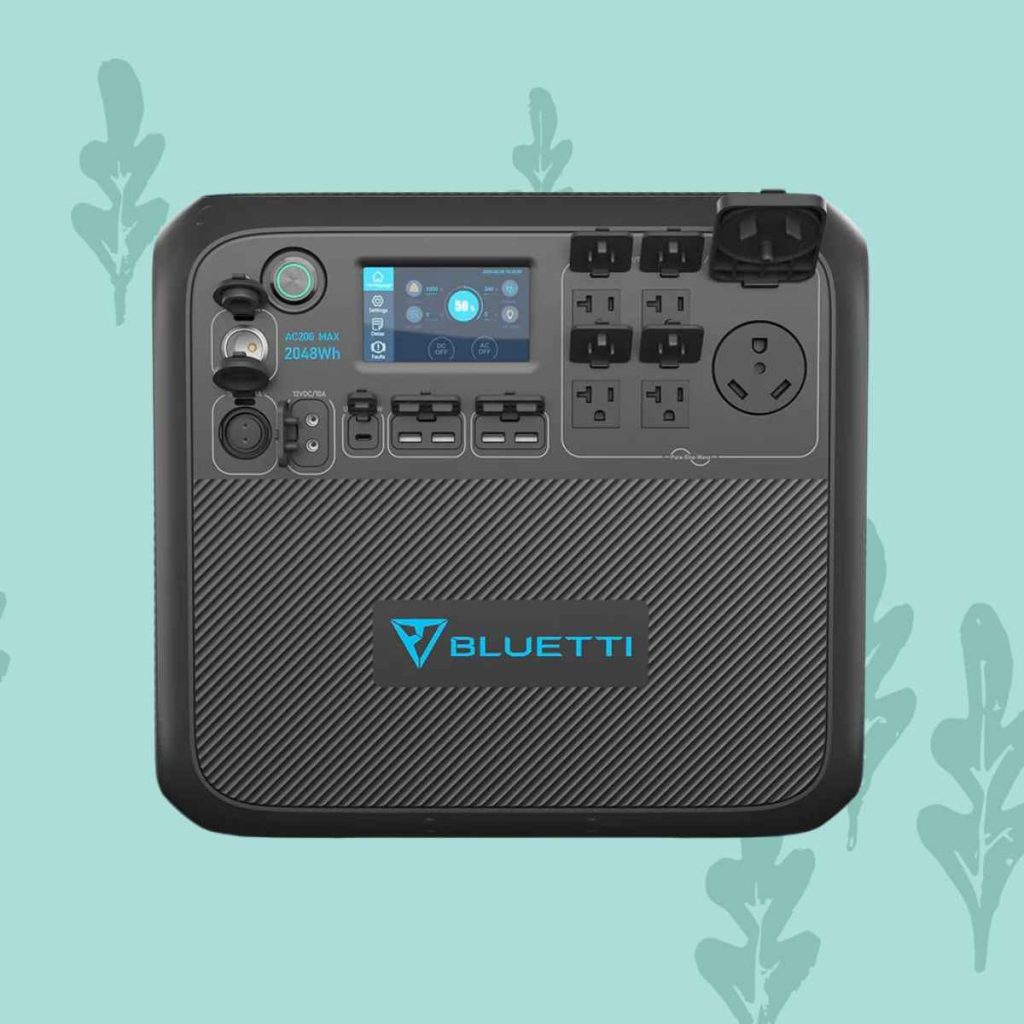
BLUETTI Power Inc., founded in 2019 in Las Vegas, has built up an impressive catalog of high-capacity portable power stations and solar generators.
Since inception, BLUETTI has achieved several milestones, including being selected by the Daily Mail as one of the best solar power stations of 2022 and named as a CES 2023 Innovation Award Honoree.
Some of BLUETTI’s standout features include the best-in-class LiFePO4 lithium cell technology, long lifespan, flame-resistant ABS enclosures, wide variety of output ports, and ergonomic design.
About Jackery
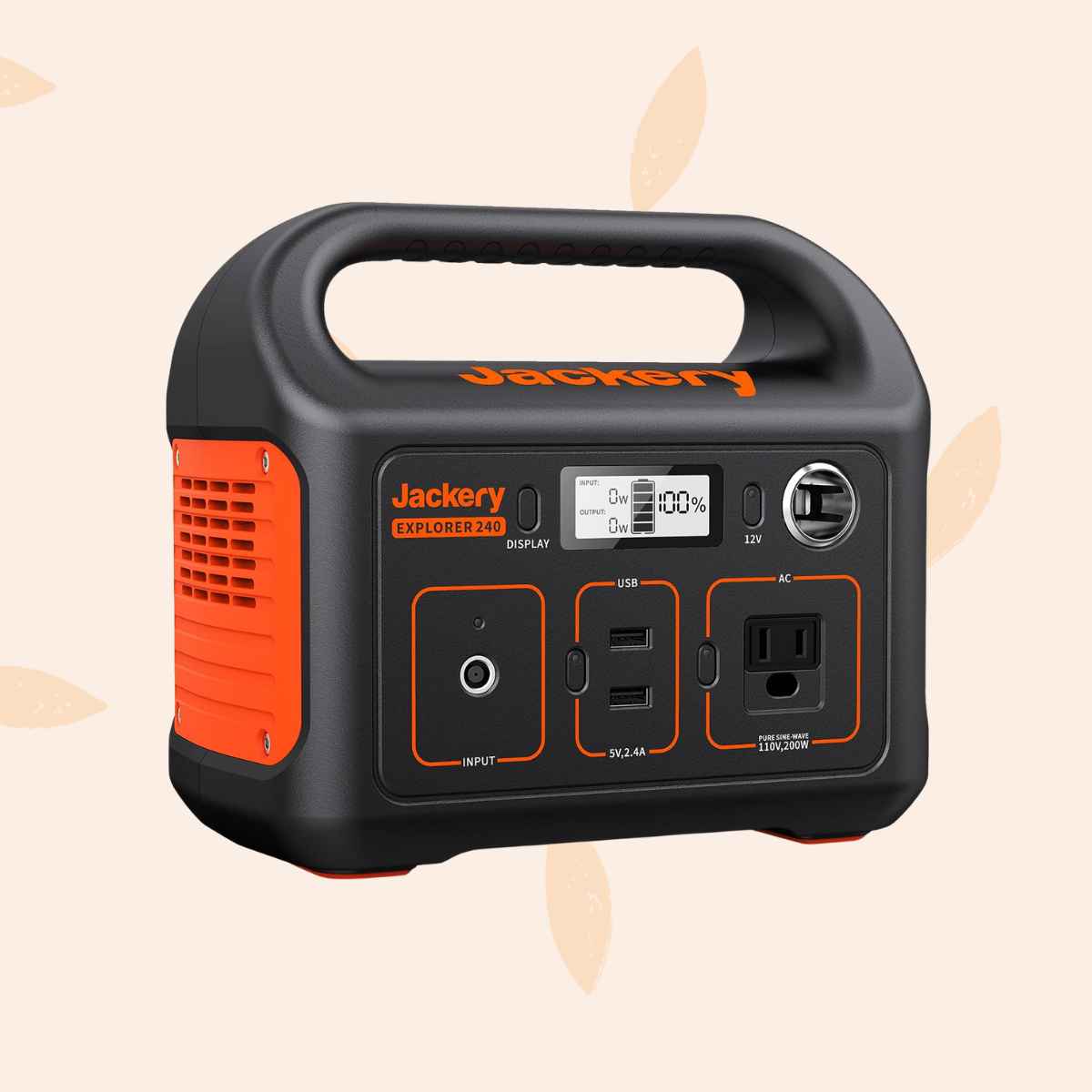
Founded in California in 2012, the company is beloved in the outdoor community for its portable power stations, solar generators and solar panels that are built for camping and rugged off-grid living. They also have three product lines – the Explorer, Explorer Pro and the new Explorer Plus.
Jackery products are specifically designed for people who love to hang out in the great outdoors, with shock-proof and fire-resistant enclosures to withstand the drops and falls that often happen when you’re backpacking, camping or hiking.
In addition, their products have advanced safety features, including Charge Shield protection to make sure that the power station doesn’t interfere with other devices while in operation.
What to Know Before Choosing a Portable Power Station
When comparing the two brands, we look at the following features to figure out how each model compares.
Battery Capacity
How much capacity can each power station store?
Lithium Ion Battery
What type of lithium ion battery is used? Our preference is for LiFePO4 batteries because they are less likely to overcharge, have more charge cycles and therefore longer lifespan.
Charge Cycles
The number of charge cycles tells you how many times the lithium-ion battery can be charged and discharged to 80% of its capacity, before the lithium-ion battery begins to degrade.
AC Recharging Time
This tells you how long the power station will take to fully recharge when plugged into an AC wall outlet.
Solar Recharging Time
This tells you how long the power station will take to recharge when plugged into a solar panel. Keep in mind that this estimate is based on the input power and number of solar panel.
AC Continuous Output
This tells you the type and how many different devices you can plug into the AC outlets on the portable power station.
Weight
We look at how portable and easy to carry the model is.
Output Ports
It’s important to know the number and type of output ports, including AC, DC, USB-A, USB-C and wireless charging pads.
APP Control
Increasingly portable power stations are WiFi and/or BlueTooth enabled, and can be remotely monitored via an app.
Warranty Protection
How long will the manufacturer support the device?
Retail Price
How much is the retail value of the portable power station, not including discounts or sales.
Bluetti vs Jackery
Bluetti EB3A vs Jackery Explorer 300 Plus
Bluetti EB3A and Jackery Explorer 300 Plus portable power stations can charge devices like a 10-watt LED light for about 25 hours, 30-watt smartphone 10 to 13 times, and an 80-watt laptop approximately 3 to 6 times.
Our Choice: BLUETTI EB3A
Why do we choose the BLUETTI EB3A over the Jackery Explorer 300 Plus?
The BLUETTI EB3A has more fast recharge options.
The Bluetti EB3A has 3 fast recharge options within 2 hours or less, and a total of 6 ways to recharge. In comparison, the Jackery 300 Plus has 1 fast recharge option within about 2 hours, and a total of 3 different ways to recharge.
The BLUETTI EB3A delivers more power.
The Bluetti EB3A has 600W AC output and 1200W surge power. The Jackery 300 Plus has 300W AC output and 600W surge power.
The BLUETTI EB3A has more outputs to plug into.
The Bluetti EB3A has a total of 9 outlets and ports, compared to 5 on the Jackery 300 Plus. In addition, the EB3A offers wireless charging and USB-C quick-charge ports, which aren’t available on the Jackery 300 Plus.
The BLUETTI EB3A can be used as an UPS.
The Bluetti EB3A has a 24/7 UPS mode (Uninterrupted Power Supply). This means that it can automatically switch on in a power outage, to support sensitive equipment like medical devices and desktop computers. The Jackery 300 Plus doesn’t have this option.
Our Comparison Data: BLUETTI EB3A vs Jackery Explorer 300 Plus
| Features | BLUETTI EB3A | Jackery Explorer 300 Plus |
|---|---|---|
| Capacity | 268Wh | 288Wh |
| Battery Type | LiFePO4 | LiFePO4 |
| AC Output | 600W Pure Sine Wave (1200W Surge) | 300W Pure Sine Wave (600W Surge) |
| Charge Cycles | 2,500+ charge cycles to 80% | 3,000 charge cycles to 80%+ |
| AC Charging Time | 1.5 to 2 hours | 1.5 to 2 hours |
| Max AC Input: | 268W to 350W | 90W |
| Solar Charging Time | 1 to 2 hours | 9 to 10 hours |
| Max Solar Input | 200W | 100W |
| DC Charging Time | 3 to 4 hours | 5.5 to 6 hours |
| Dual Charging Charging Time | 1.2 to 1.7 hours (AC + Solar) | 2 hours (AC + USB-C) |
| Weight | 10.14 lbs (4.6 kg) | 8.3 lbs (3.75kg) |
| Outputs | 9 total: – 2x AC (120V/5A) – 2x USB-A – 1x USB-C (100W) – 1x Wireless (15W) – 1x DC carport (12V/10A) – 2x DC5521 (12V/10A) | 5 total: – 1x AC (120V/5A) – 1x USB-A (15W) – 1x PD USB-C (100W) – 1x PD USB-C (10W) – 1x DC carport (12V/10A) |
| Noise Level | unknown | 36dB |
| Bluetooth | Yes | Yes |
| WiFi | No | Yes |
| APP Control | Yes | Yes |
| Warranty | 2-years | 5-years |
Bluetti EB55 vs Jackery Explorer 500
Bluetti EB55 and Jackery Explorer 500 portable power stations can charge devices like an 8-watt smartphone about 60 times, a 200-watt electric blanket for about 2.6 hours, and a 400-watt mini fridge for about 1.3 hours.
Our Choice: BLUETTI EB55
Why do we choose the BLUETTI EB55 over the Jackery Explorer 500?
BLUETTI EB55 uses premium LiFePO4 lithium technology.
The Bluetti EB55 has a Lithium Iron Phosphate (LiFePO4) battery, which is considered safer because of its high thermal capacity and has a 4 to 5 times longer life span than the Lithium Nickel Manganese Cobalt (NMC) battery used in the Jackery Explorer 500.
BLUETTI EB55 gives you more AC outlets to plug into.
The Bluetti EB55 has 4 AC outlets, while the Jackery Explorer 500 only has 1. AC outlets are one of the most common, so having several is more convenient.
BLUETTI EB55 provides more output and surge power.
The Bluetti EB55 delivers 700W output and 1400W surge power, compared to the Jackery Explorer 500 500W output and 1000W surge power.
BLUETTI EB55 has more charge cycles.
The Bluetti EB55 has 2,500 charge cycles, while the Jackery Explorer 500 has 500 charge cycles. Having more charge cycles means that the lithium battery will last longer.
BLUETTI EB55 provides more ways to quickly recharge.
The Bluetti EB55 can be fully recharged in less than 2 hours using dual 200W AC + 200W solar or both 400W AC outlets. All of the Jackery Explorer 500 recharging options take a minimum of 7 hours.
BLUETTI EB55 has more outputs to plug into.
The Bluetti EB55 provides 13 outlets and ports, including AC outlets, DC, USB-A, USB-C and a wireless charging pad. On the other hand, the Jackery Explorer 500 has 7 outputs, and does not provide wireless or USB-C.
Our Comparison Data: BLUETTI EB55 vs Jackery Explorer 500
| Features | BLUETTI EB55 | Jackery Explorer 500 |
|---|---|---|
| Capacity | 537Wh | 518Wh |
| Battery Type | LiFePO4 | NCM |
| Expandable Battery | No | No |
| AC Output | 700W (1400W Surge) | 500W (1000W Surge) |
| Life Cycle | 2,500+ charge cycles up to 80% | 500 charge cycles up to 80%+ |
| AC Charging Time | 3 to 4 hours | 7.5 hours |
| AC Max Input | — | — |
| Dual AC Charging Time | 1.8 hours | — |
| Solar Charging Time | 3-4 hours | 9.5 hours |
| Solar Max Input | 200W | 200W |
| Dual Charging Time | 2 hours (AC + Solar) | — |
| DC Charging Time | 3.4 to 4 hours | 7.5 hours |
| Gas Generator Charging Time | 3-4 hours | — |
| Noise Level | unknown | 37.9dB |
| Weight | 16.5 lbs (7.5 kg) | 13.3 lbs (6.04 kg) |
| Outputs | 13 total: – 4x AC outlets – 4x USB-A Port 5V / 3A – 1x USB-C Port 100W – 1x Carport – 2x DC5521 – 1x Wireless Pad | 7 total: – 1x AC outlets – 3x USB-A ports – 2x DC – 1x car port |
| Bluetooth | No | No |
| WiFi | No | No |
| APP Control | No | No |
| Warranty | 2-years | 2+1 years |
Bluetti AC180 vs Jackery Explorer 1000 Plus
Bluetti AC180 and Jackery Explorer 1000 Plus can power more energy hungry devices, like a 50-watt LED TV for about 25 hours, 200-watt gaming console for about 6 hours and a 1200-watt microwave for approximately 1 hour.
Our Choice: Jackery Explorer 1000 Plus
Why do we choose the Jackery Explorer 1000 Plus over the Bluetti AC180?
Jackery Explorer 1000 Plus has expandable battery capacity.
The Jackery 1000 Plus capacity expands from 1264Wh to 5000Wh, which makes it more customizable and scalable as your power needs grow. The Bluetti AC180 doesn’t have this option.
Jackery Explorer 1000 Plus 10 outlets and ports, including a high current AC outlet.
The Jackery 1000 Plus has 10 outlets and ports to plug into, including 4 x AC outlets, 1 high current AC outlet (230V / 25A Max), 2 USB-A ports, 2 fast charge USB-C ports, and 1 DC port. The high current AC outlet allows you to power larger appliances and devices.

Jackery Explorer 1000 Plus delivers more output power.
The Jackery Explorer 1000 Plus provides 2000W output with 4000W surge power, compared to the Bluetti AC180’s 1800W output and 2700W surge power.
Jackery Explorer 1000 Plus has more charge cycles.
The Jackery 1000 Plus lithium battery will last for 4,000+ charge cycles until the battery power starts to degrade, compared to the Bluetti AC180’s 3,500+ charge cycles.
Jackery Explorer 1000 Plus is slightly more lightweight.
The Jackery 1000 Plus weighs 32 pounds, compared to about 37 pounds for the Bluetti AC180.
Comparison Data: BLUETTI AC180 vs Jackery Explorer 1000 Plus
| Features | BLUETTI AC180 | Jackery Explorer 1000 Plus |
|---|---|---|
| Capacity | 1,152Wh | 1,264Wh to 5,000Wh |
| Battery Type | LiFePO4 | LiFePO4 |
| Expandable Battery | Yes | Yes |
| AC Output | 1,800W (2,700W Surge) | 2,000W (4,000W Surge) |
| Charge Cycles | 3,500+ charge cycles up to 80% | 4,000+ charge cycles to 80%+ |
| AC Charging Time | 2 hours | 1.6 hours |
| Solar Charging Time | 2.8 to 3.3 hours | 3 hours |
| Max Solar Input | 500W | 200W |
| DC Charging Time | 5.3 to 6 hours | 7 hours |
| Generator Charging Time | 1.3 to 2 hours | — |
| Weight | 37.4 lbs (16.96 kg) | 32 lbs (14.5 kg) |
| Output Ports | 11 total: – 4x AC – 4x USB-A (15W) – 1x USB-C (100W) – 1x Wireless Pad (15W) – 1x DC (12V) | 10 total: – 4x AC (20A Max) – 1x AC (230V / 25A Max) – 2x USB-A Port (18W) – 2x USB-C Port (100W) – 1x DC (12V) |
| Bluetooth | ||
| WiFi | Yes | Yes |
| APP Control | Yes | Yes |
| Warranty | 5 years | 3+2 years |
Bluetti AC200P vs Jackery Explorer 2000 Pro
The BLUETTI AC200P and Jackery Explorer 2000 Pro have enough capacity to run devices like a 10-watt smartphone 170 times, a 500-watt space heater for 2.5 to 3.5 hours and a 1800-watt electric vehicle for 11 miles.
Our Choice: BLUETTI AC200P
Why do we choose the BLUETTI AC200P over the Jackery Explorer 2000 Pro?
BLUETTI AC200P has a superior LiFePO4 battery.
The Bluetti AC200P’s LiFePO4 battery is safer, more efficient and longer lasting than the Jackery Explorer 2000 Pro’s NMC battery.
BLUETTI AC200P provides more ways to recharge.
The Bluetti AC200P can be recharged using 7 different methods, including by AC wall outlet, Dual AC, AC+Solar, Solar, 12V Carport, Generator or Lead battery. The Jackery Explorer 2000 Pro can be recharged using 3 methods – AC, DC and Solar.
BLUETTI AC200P has more charge cycles.
The Bluetti AC200P delivers 3,500 charge cycles, compared to only 1,000 charge cycles from the Jackery Explorer 2000 Pro. The number of charge cycles tells you how many times the battery can be charged and discharged before its performance starts to decrease.
BLUETTI AC200P has more outlets and ports to plug into.
The Bluetti AC200P provides 17 outlets and ports, including USB-C PD, wireless, and DC RV ports.
Bluetti AC200P Outlets and Ports
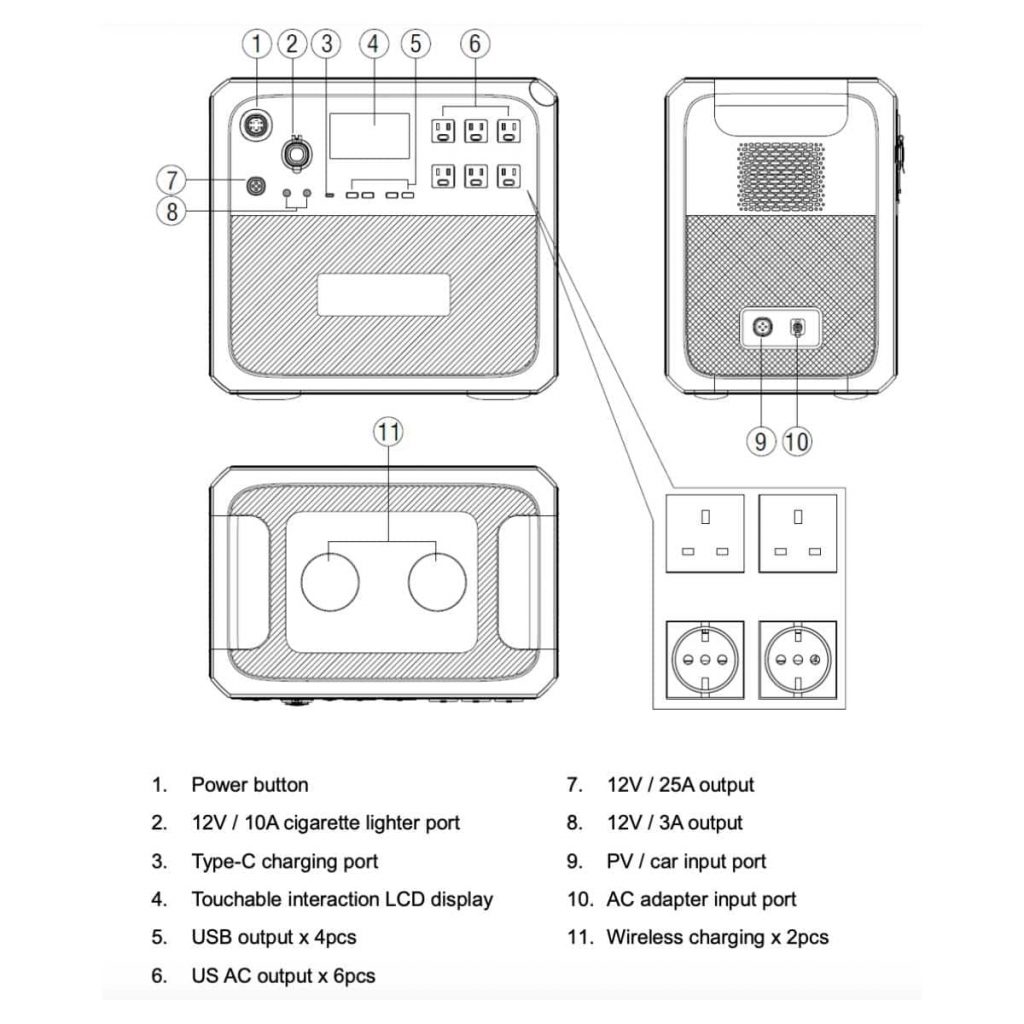
In comparison, the Jackery 2000 Pro has much fewer ways to plug in devices, with only 8 outlets and ports.
Comparison Data: BLUETTI AC200P vs Jackery Explorer 2000 Pro
| Features | BLUETTI AC200P | Jackery Explorer 2000 Pro |
|---|---|---|
| Capacity | 2000Wh | 2160Wh |
| Battery Type | LiFePO4 | NMC |
| AC Output | 2000W (4800W Surge) | 2200W (4400W Surge) |
| Charge Cycles | 3,500+ life cycles to 80% | 1,000 charge cycles to 80%+ |
| AC Charging Time | 5 to 6 hours | 2 hours |
| Max AC Input | 500W | 120V, 60Hz, 15A Max |
| Solar Charging Time | 3.5 to 4 hours | 2.5 hours |
| Max Solar Input | 700W | 1200W |
| DC Charging Time | 10 to 20 Hours | 24 hours |
| Dual Charging Time | 2.2 to 2.7 Hours (AC + Solar) 2.5 to 3 Hours (Dual AC) 2.1 to 2.5 Hours (Solar + Solar) | — |
| Weight | 60.6 lbs (27.5kg) | 43 lbs (19.5 kg) |
| Output Ports | 17 total: – 6x AC – 4x USB-A (5V/3A) – 1x USB-C PD (60W) – 2x Wireless Pads (15W) – 2x DC5521 (12V/3A) – 1x Car port (12V) – 1x DC RV (12V/25A) | 8 total: – 3x AC – 2x USB-A Port (18W) – 2x USB-C (100W) – 1x Carport (12V) |
| Bluetooth | No | No |
| WiFi | No | No |
| APP Control | No | No |
| Warranty | 4 years | 3+2 years |
Bluetti AC300 + B300 VS Jackery Explorer 3000 Pro
Bluetti AC300 + B300 and Jackery Explorer 3000 Pro can power energy hungry appliances and devices like a 500-watt electric kettle for about 5 hours, 800-watt refrigerator for about 2 to 3 hours, 8000BTU air conditioner for 3 to 5 hours. These models are great for home power outages when a lot of battery capacity and output are needed.
Our Choice: BLUETTI AC300 + B300
Why do we choose the BLUETTI AC300 + B300 over the Jackery Explorer 3000 Pro?
BLUETTI AC300 + B300 uses premium LiFePO4 battery technology.
The Bluetti AC300 + B300 LiFePO4 battery technology is superior to the NMC lithium technology used in the Jackery 3000 Pro.
BLUETTI AC300 + B300 has more expandable battery capacity.
The Bluetti AC300 + B300 battery capacity can be increased from 3072Wh to 12,288Wh, more than 4 times it’s original size! In comparison, the Jackery 3000 Pro battery capacity maxes out at 3024Wh.
BLUETTI AC300 + B300 has more charge cycles.
The Bluetti AC300 + B300 delivers 3,500 charge cycles, compared to 1,000 charge cycles from the Jackery 3000 Pro.
BLUETTI AC300 + B300 provides more outlets and ports.
The Bluetti AC300 + B300 offers 16 outlets and ports to plug into, including AC, DC, USB-A, USB-C, wireless charging and a high current AC outlet. This gives you a wide range of options to plug your devices.
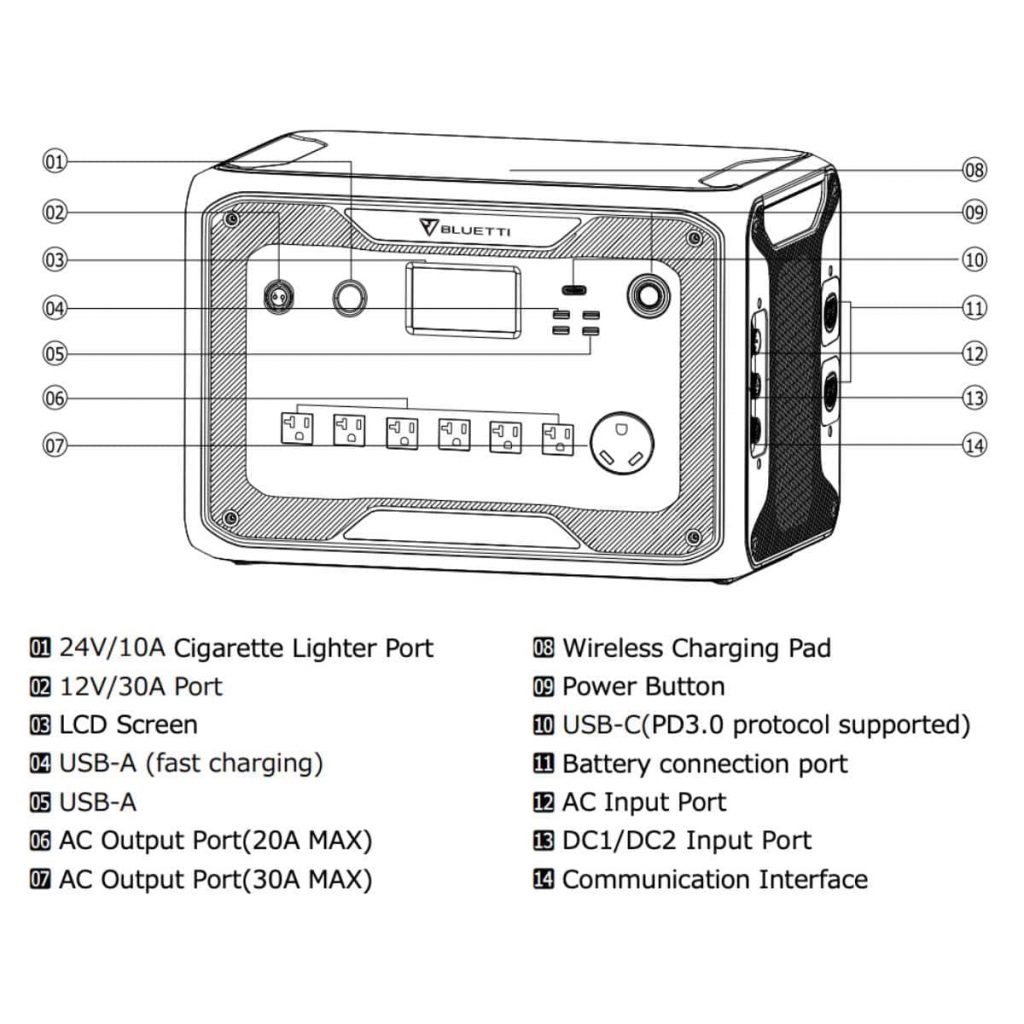
In comparison, the Jackery Explorer 3000 Pro gives you 10 outlets and ports.
BLUETTI AC300 + B300 has specialized ports for RV and van life users.
The Bluetti AC300 + B300 has two 12V / 30A RV ports, which allow you to plug in more energy intensive devices, like power tools. The Jackery 3000 Pro doesn’t provide this option.
BLUETTI AC300 + B300 is more affordable.
With a $200 cheaper retail price tag, the Bluetti AC300 + B300 is more affordable compared to the Jackery 3000 Pro.
Comparison Data: BLUETTI AC300 + B300 VS Jackery Explorer 3000 Pro
| Features | Bluetti AC300 + B300 | Jackery Explorer 3000 Pro |
|---|---|---|
| Capacity | 3072Wh expandable up to 12,288Wh | 3024Wh |
| Battery Type | LiFePO4 | NCM |
| Life Cycle | 3,500+ cycles to 80% | 1,000 charge cycles to 80% |
| AC Charging Time | 1.5 to 3 hrs (3,000W AC charging) | 2.4 hours |
| Solar Charging Time | 4 to 9 hours | 3 to 3.5 hours |
| AC Output | 3000W (6000W Surge) | 3000W (6000W Surge) |
| Weight | AC300 – 33.1 lbs; B300 – 28.6 lbs | 63.9 lbs |
| Output Ports | 16 total: – 6x AC – 1x RV Port 12V/30A – 2x USB-A Port (18W) – 2x USB-A Port 5V/3A – 1x USB-C Port (100W( – 2x Wireless Charging Pads (15W) – 1x NEMA TT-30 30A – 1x DC carport 24V/10A | 10 total: – 1x AC 25A Max / 3000W – 4x AC 20A Max / 2400W – 2x QC3.0 USB-A – 2x PD USB-C Port (100W) – 1x Car port |
| APP Control | Yes | Yes |
| Warranty | 4-years | 5-years |
Bluetti Pros & Cons
| PROS | CONS |
|---|---|
| Uses Premium LiFePO4 Battery. Safe, Efficient, Long Lasting, BLUETTI uses LiFePO4 in all of the power stations we reviewed. | Pass-Through Charging Not Always Available. Some models cannot charge devices and re-charge the battery at the same time. |
| Long Lifespan. BLUETTI power stations are long lasting, with charge cycles ranging between 2,000 – 3,500. | Issues with Customer Support. Some customers have reported a lack of communication and delays in warranty responses. |
| Wide Variety of Outputs. BLUETTI models provide a wide selection of outlets and ports, including AC, DC, USB-A, USB-C and wireless charging pads. | |
| Comes with Standard Connectors. BLUETTI power stations use standard connectors like MC4, XT60, and XT90. This allows you to use third party products. | |
| Delivers Pure Sine Wave Power. Necessary to ensure devices are safely and efficiently charged. |
Bluetti Customer Reviews
BLUETTI’s customer feedback paints a complicated picture. On the one hand, BLUETTI gets mostly great reviews on Amazon, with products like the EB55, AC180, EB70S top-rated as “Amazon Choice”. Customers generally have positive experiences with product performance, in especially in terms of the lightweight design and overall efficiency.
Positive Customer Feedback
- It gets positive reviews from tech experts. Technology writer Brad Moon of Forbes.com and the outdoor gear expert at Ridgeline Report gave the EB3A positive reviews.
- Customers report that the BLUETTI EB3A higher price comes with better materials and construction compared to other brands in the same price range.
- Customers like that the BLUETTI AC200 Max device capacity provides enough sustained output to operate multiple devices for extended periods at once while on the go or camping.
- Customers also like BLUETTI product durability, numerous charging ports and portability.
That said, most BLUETTI customer frustrations are related to customer service, shipping difficulties and poor documentation. This dissatisfaction linked to customer service indicates an area where the company can significantly improve its practices.
Negative Customer Feedback
- Several users describe an automatic response system which requires them to submit lots of information in order to explain the issue they’re trying to fix, without a satisfactory resolution.
- Some customers also report problems getting correct shipping information between what is provided by BLUETTI online and the actual status in transit.
Jackery Pros & Cons
| PROS | CONS |
|---|---|
| Advanced Safety and Battery Management. Jackery models feature advanced forms of protection with self-regulating temperature sensors, ChargeShield protection, and electromagnetic compatibility. | Uses Inferior NMC Lithium Batteries. Jackery still uses NMC batteries in their Explorer and Explorer Pro line. These batteries have a much shorter life span and are more prone to overheating. |
| Comes With Regulated Ports. Jackery products have regulated ports, which are important for sensitive appliances and devices like refrigerators. | Limited Charge Cycles in Some Models. Jackery’s Explorer and Explorer Pro line have life spans around 500 – 800 charge cycles, which is about 3-5 years, depending on usage. |
| Quiet Operation. Jackery power stations run quietly, with noise levels at less than 30 decibels. | Uses Propiertary Connectors. Jackery uses proprietary connectors for its solar panels and portable power stations. |
| Sustainability Certifications. Jackery was one of the first in the industry to receive the TÜV SÜD, which verifies zero emissions, fumes or noise are released. | Expensive Compared to Similar Products. Jackery products tend to have a higher price tag than competing products like BLUETTI. |
| Supports Pass Through Charging. Jackery portable power stations can be recharged while also powering connected devices. | Pure Sine Wave Energy. Important for safe, efficient energy delivery. |
| Durable Exterior. Jackery products are built to withstand the elements, with fireproof and shock-proof exterior to withstand drops and falls. | |
| Pure Sine Wave Energy. Pure sine wave is important for safe, efficient energy delivery. |
Jackery Customer Reviews
In customer reviews of Jackery products, several common themes are evident.
Customers consistently praise Jackery’s ease-of-use, portability and reliability, making their products ideal for outdoor events like camping and tailgating.
However, the majority of Jackery’s negative customer feedback involve problems with customer service, faulty components, disappointing power output and short battery life span.
Positive Customer Feedback
- Jackery Explorer 300 is one of the company’s most popular products on Amazon, rated as an “Amazon Choice” with customers praising its light weight, durable design and budget-friendly price tag.
- Jackery Explorer 2000 Pro gets overwhelmingly positive reviews on Amazon, with customers reporting that the battery lasts a long time on one charge, they provide plenty of power on demand in any situation you might need them for.
- Customers appreciate how quickly they can set up Jackery’s products; they have been described as compact, lightweight devices that can be charged from mains or solar panels very easily.
Negative Customer Feedback
- Customers have reported inconsistencies with the power output of some Jackery products, such as the Explorer 1000 Portable Power Station and the Explorer 500.
- Battery life is also an issue and many customers report their batteries dying sooner than expected. Other common complaints include faulty USB outlets, limited portability, slow charging speeds, and false advertising from the company.
- Furthermore, problems with charge controllers for solar panels are a frequent issue mentioned, with USB ports not providing enough charge when using higher output ports because of built-in overload amperage protection.
- The Better Business Bureau shows Jackery customers reporting delays in response to negative reviews and complaints. Jackery replies to about 56% of its negative reviews on Amazon within 24 hours, and there are reports that responses can sometime take weeks or months.
Why We Like LiFePO4 Battery Technology
Lithium Iron Phosphate (LiFePO4) battery technology offers a number of distinct advantages compared to other battery technologies.
- One of LiFePO4 key benefits is its long lifespan — LiFePO4 batteries can last up to 10 times longer than lead-acid batteries or lithium-ion versions. They typically have 2,000 to 5,000 charge cycles, or around 10 years of life before needing to be replaced
- LiFePO4 have a lower risk of overheating and overcharging because of their chemistry. The battery chemistry is stabilized by releasing energy in slower increments over time instead of in sudden spikes, reducing the risk of fire and other safety hazards.
- LiFePO4 battery technology is designed to work efficiently at both cold and hot temps—from -4°F (-20°C) to 140°F (60°C).
FAQs
What are the dimensions and weight of the BLUETTI EB55?

The dimensions of the BLUETTI EB55 are 10.94 inches by 7.87 inches x 7.79 inches (27.8 centimeters x 20 centimeters x 19.8 centimeters), with a weight 16.5 pounds (7.5 kilograms).
How long does it take to charge the Bluetti EB3A?
The BLUETTI EB3A portable power station can be charged in 30-40 minutes using the 430W fast-charging USB port, about 2 hours by plugging into an AC wall outlet, 1 hour using a combination of solar and AC fast dual charginga, bout 2 to 5 hours using 200W solar panels, or 3.5 to 4 hours using a 12V car port outlet.
What is the weight of the Jackery Explorer 300 Plus?
The Explorer 300 Plus weighs 8.27 lbs (3.75 kg), making it lightweight and easy to carry on trips and camping.
How many AC outlets does the Jackery Explorer 300 Plus have?
The Explorer 300 has two pure sine wave AC outlets, with a combined 300-watt power output.
What is the battery management system used in Jackery power stations?
The battery management system (BMS) used in Jackery’s portable power stations is a smart-BMS that provides several overlays of protection for lithium-ion batteries. The Jackery BMS controls the battery’s charge and discharge processes, voltage and temperature control, and over-voltage protection.
What is the difference between the BMS in the Jackery Explorer 1000 and the Explorer 1500?
The Jackery Explorer 1000 and the Explorer 1500 portable power stations have different forms of protection used in their respective battery management systems (BMS). The BMS in the Explorer 1500 has 12 forms of protection, while the Explorer 1000 has an unspecified forms of protection including over-voltage, high temperature and short circuit.
What is the weight difference between the Explorer 1000 and the Explorer 1500?
The Jackery Explorer 1500 is about 13 pounds (5.9 kilograms) heavier than the Jackery Explorer 1000. The Explorer 1500 weighs 35.2 pounds (16 kg) and the Explorer 1000 weighs 6 kg (13.2 lbs).
What is the battery capacity of BLUETTI AC200P portable power station?

The BLUETTI AC200P portable power station has battery capacity of 2,000 watt-hours.
How does the battery capacity of BLUETTI EB3A compare to Jackery Explorer 240?
The BLUETTI EB3A has more battery capacity, with 268 watt-hours. This is compared to 240 watt-hours for Jackery Explorer 240.
Conclusion
When we look at BLUETTI vs Jackery head-to-head, BLUETTI consistently emerges as the stronger brand because of their superior lithium cell technology, longer life cycle, greater number of output ports, in addition to consistently cheaper price point across most of their products.
Helpful Resources:
- An In-depth Review of Jackery Power Stations
- This review provides a detailed analysis of Jackery power stations, offering insight into their features and performance.
- BLUETTI: A Comprehensive Product Guide
- This guide compares BLUETTI and Jackery, helping readers understand the differences and similarities between the two brands.
- User Experiences: Jackery vs BLUETTI
- This Reddit thread shares user experiences and opinions comparing BLUETTI AC200P and Jackery 1500, providing real-world insights from consumers.
BLUETTI EB3A
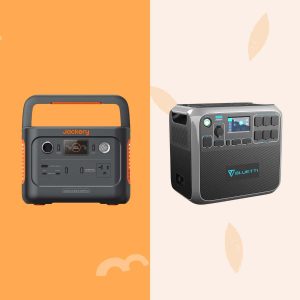
BLUETTI EB3A Portable Power Station: Compact yet powerful, this unit offers 268Wh capacity and 600W output. Features solar charging, fast recharging, and a user-friendly app control. Ideal for camping, emergencies, and outdoor adventures.
Product Brand: BLUETTI
4.7
Pros
- Compact Size: The EB3A is one of the smallest in the EB range, making it suitable for less demanding usage.
- Multiple Outlets: It includes a total of 8 outlets, allowing for charging multiple devices simultaneously.
- Design and Build Quality: The unit is lightweight, compact, and made of high-quality materials. The display screen is clear and easy to read.
- Battery Life: The LiFePO4 battery offers an impressive lifespan of 2500+ cycles to 80% capacity.
Cons
- Limited Power Capacity: The EB3A can only run appliances up to a maximum of 600W, which may not be sufficient for high-power devices.
- App Dependency: Certain settings, like adjusting the charge rate, can only be controlled via the app, which might be a concern if the app becomes unsupported in the future.
Jackery Explorer 300 Plus

The Jackery Explorer 300 Plus Portable Power Station is a compact and versatile power solution. It's lightweight at just 8.27 lbs, making it highly portable and ideal for outdoor adventures like camping and road trips. The unit boasts a 288Wh capacity with a 300W output power, and offers multiple charging ports, including dual PD ports capable of up to 100W output.
4.4
Pros
- Portability and Weight: The unit is highly portable and lightweight (8.27 lbs), making it suitable for outdoor activities like camping.
- Versatile Charging Options: Offers a variety of ports including USB-C and a 12V car port, catering to different charging needs.
- Fast Charging Capability: The power station charges quickly with AC power, taking about 2 hours.
- Durable and Long-lasting: The build quality is solid, and the LiFePO4 battery, along with good battery management, promises a long lifespan.
- App Integration: The Jackery app is useful for monitoring battery levels, charging rate, and managing the unit's settings.
Cons
- Power Limitations: With a 300W total output, it might not be sufficient for high-power devices or appliances.
- Confusing Display Indicators: Some users find the display, particularly the time remaining indicator, to be confusing or inaccurate under certain conditions.
BLUETTI EB55

The BLUETTI EB55 is a portable power station featuring a 700W pure sine wave inverter (with a 1400W surge capacity) and a substantial 537Wh capacity. It utilizes a LiFePO4 battery, ensuring longevity with over 2,500 life cycles to 80% of its original capacity. This power station offers 13 diverse outputs for powering multiple devices simultaneously, including a wireless charging pad. It supports a variety of recharging methods, including solar, and has a maximum solar input of 200W.
Product Brand: BLUETTI
4.7
Pros
- Battery Capacity and Inverter: 537Wh battery capacity and a pure sine wave inverter capable of delivering 700W continuously and a peak of 1400W, it is suitable for powering various devices like laptops, mini-fridges, and more.
- Diverse Ports: It offers a good selection of ports, including four AC outlets, USB A and C ports, and DC outputs, allowing the charging of multiple devices simultaneously.
- LiFePO4 Battery: The use of LiFePO4 batteries enhances safety and durability, with a life cycle of up to 2500 charges before reaching 80% capacity.
Cons
- Cooling Fan Noise: The cooling fan can become noisy under load or while charging.
- Display Limitations: The display shows battery level in increments of 20%, lacking a precise battery percentage, which can be a drawback for some users.
- No Wi-Fi/Bluetooth Support: The EB55 lacks Wi-Fi or Bluetooth connectivity for remote monitoring or control via a smartphone.
- AC Charger Fan Always Runs: The AC charger’s fan runs constantly, even when the power station is fully charged, which some users may find annoying.
Jackery Explorer 500

The Jackery Explorer 500 is a compact portable power station that offers 518Wh capacity and 500W output (1000W surge) through a pure sine wave inverter. This ensures stable and safe power for a variety of appliances and devices. Its design is lightweight and portable, featuring a sturdy carry handle for easy transportation.
Product Brand: Jackery
3.8
Pros
- Provides multiple charging options, including solar, wall, and car charging.
- Supports pass-through charging, allowing you to recharge devices while the unit itself is being recharged.
- Features individual on/off buttons for each output, enhancing energy efficiency.
Cons
- Does not include a USB-C port, which may be a limitation for some modern devices.
- Some customers have pointed out a poorly thought-out design of the DC ports.
Jackery Explorer 1000 Plus

Jackery Explorer 1000 Plus is a robust portable power station with 1264Wh capacity, 2000W output, expandable to 5kWh. Features fast 2-hour solar charging, durable LiFePO4 battery, and smart app control. Comes with a 5-year warranty.
Product Brand: Jackery
4.7
Pros
- Expandable Capacity: It supports up to 3 additional battery packs, allowing expansion up to 5000Wh.
- Multiple Outlets: Equipped with 3 x 120V AC outlets, 2 x USB-A ports, 2 x USB-C ports, and a 12V vehicle DC port, it can charge a variety of devices.
- High Power Output: With a max output of 2000W continuous and 4000W surge, it can run high-power devices like coffee makers, microwaves, and portable air conditioners.
Cons
- Weight and Size: The unit is relatively heavy and may not be suitable for backcountry trips where portability is crucial.
- App Functionality: The Jackery app provides basic control and monitoring functions, but it may lack advanced settings compared to some competitors.
- No Covers for USB Ports: The lack of covers for the USB ports might be a minor inconvenience for some users.
BLUETTI AC200P

BLUETTI AC200P is a robust portable power station with a 2000Wh capacity and 2000W AC inverter (4800W surge). Features 17 output ports and multiple charging options, including AC and car adapters. Compact and heavy, ideal for various power needs.
Product Brand: Bluetti
4.8
Pros
- Large Capacity Battery: The unit features a 2000Wh high-capacity lithium battery, providing substantial power backup.
- High Power Output: It offers 2000 watts of continuous power
- Versatile Charging Options: The AC200P supports multiple charging methods, including solar, AC, and car charging.
- Multiple Outlets: It includes 6 AC power outlets, USB-A and USB-C ports, and 2 wireless charging pads, allowing for the charging of multiple devices simultaneously.
- Advanced Battery Technology: It uses a lithium iron phosphate (LiFePo4) battery, offering about 3,500 charge cycles, which ensures longevity and reliability.
Cons
- Weight: Weighing around 60 lbs, the AC200P is quite heavy, which may pose portability issues for some customers
- Display Visibility: The display can be challenging to read in bright daylight, which could be a limitation in outdoor settings.
- Lack of Hardware Switches: Except for the main On/Off button, all controls are accessed through the display.





